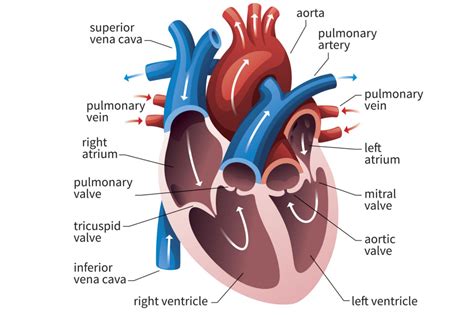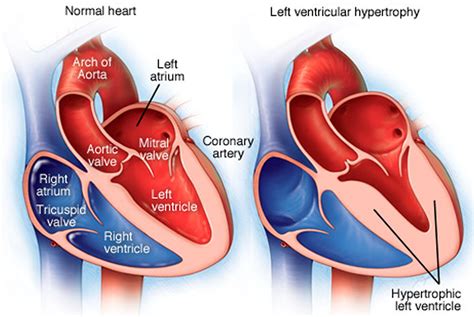left ventricular lv Left ventricular hypertrophy is thickening of the walls of the lower left heart chamber. The lower left heart chamber is called the left ventricle. The left ventricle is the heart's main pumping chamber. During left ventricular hypertrophy, the thickened heart wall can become stiff. Blood pressure in the heart increases. The . See more 22 talking about this
0 · what is the function and anatomy of left ventricle
1 · left ventricular prominence
2 · left ventricular hypertrophy life expectancy
3 · left ventricular function
4 · left ventricular dysfunction
5 · left ventricular anatomy
6 · left ventricle location and function
7 · left ventricle location
Top 10 Best City Athletic Club in Las Vegas, NV - February 2024 - Yelp - KILO CLUB, Las Vegas Athletic Club, Life Time, Savage Bodies, City Athletic Boxing, Planet Fitness.
Left ventricular hypertrophy is thickening of the walls of the lower left heart chamber. The lower left heart chamber is called the left ventricle. The left ventricle is the heart's main pumping chamber. During left ventricular hypertrophy, the thickened heart wall can become stiff. Blood pressure in the heart increases. The . See more
Left ventricular hypertrophy usually develops gradually. Some people do not have symptoms, especially during the early stages of the condition. Left ventricular hypertrophy itself doesn't cause symptoms. But symptoms may occur as the strain on the . See moreAnything that puts stress on the heart's lower left chamber can cause left ventricular hypertrophy. The lower left chamber is called the . See moreLeft ventricular hypertrophy changes the structure of the heart and how the heart works. The thickened left ventricle becomes weak and stiff. This prevents the lower left heart . See moreThings that increase the risk of left ventricular hypertrophy include: 1. Age.Left ventricular hypertrophy is more common in older people. So is . See more
Systolic heart failure: The bottom pumping chamber of your heart called the left ventricle is too weak to pump blood out to your body. It’s also known as heart failure with reduced ejection . Left ventricular hypertrophy, or LVH, is a term for a heart’s left pumping chamber that has thickened and may not be pumping efficiently. Sometimes problems such as aortic stenosis or high blood pressure overwork .

what is the function and anatomy of left ventricle
The left ventricle is an integral part of the cardiovascular system. Left ventricular contraction forces oxygenated blood through the aortic valve to be distributed to the entire body. With such an important role, decreased . Left ventricular failure occurs when there is dysfunction of the left ventricle causing insufficient delivery of blood to vital body organs. Left ventricular hypertrophy (LVH) is when the heart’s main pumping chamber, the left ventricle, becomes thicker and less able to pump blood efficiently. It usually develops because of.
Assessment of left ventricular systolic function has a central role in the evaluation of cardiac disease. Accurate assessment is essential to guide management and prognosis. Numerous echocardiographic techniques are .Health Library / Diseases & Conditions / Systolic Heart Failure. Systolic heart failure, also called heart failure with reduced ejection fraction, occurs when your left ventricle can’t pump blood . The left ventricle hypertrophies in response to pressure overload secondary to conditions such as aortic stenosis and hypertension. This results in increased R wave amplitude in the left-sided ECG leads (I, aVL and V4-6) and .Left ventricular (LV) thrombus is a feared complication of LV dysfunction associated with high rates of systemic embolism, morbidity, and mortality. Traditionally, LV thrombus has been associated with acute myocardial .
Background: Individuals with left ventricular (LV) hypertrophy and elevated cardiac biomarkers in middle age are at increased risk for the development of heart failure with preserved ejection fraction. Prolonged .
BSA, Body surface area; LV, left ventricular; 2D, 2-dimensional. Green values: Recommended and best validated. Left Ventricular Size. Reference limits and partition values of left ventricular size Women Men . The left ventricle is the heart's main pumping chamber. It pumps oxygen-rich blood up into the body's main artery, called the aorta. The blood then goes to the rest of the body. According to the American Heart Association: A left ventricle (LV) ejection fraction of about 50% to 70% is categorized as normal. A mildly reduced LV ejection fraction . Background—Left ventricular (LV) global longitudinal strain (GLS) is a measure of the active shortening of the LV in the longitudinal direction, which can be assessed with speckle-tracking echocardiography. The aims of this evaluation were to validate the prognostic value of GLS as a new index of LV systolic function in a large cohort of patients . Left ventricular hypertrophy, or LVH, is a term for a heart’s left pumping chamber that has thickened and may not be pumping efficiently. Sometimes problems such as aortic stenosis or high blood pressure overwork the heart muscle. In response to this pressure overload, the inner walls of the heart may respond by getting thicker.
Increased left ventricular dilation and reduced systolic function are consistently associated with a poor prognosis and worse clinical outcomes. In this review, we discuss the pathophysiological mechanisms, use of cardiac imaging, and clinical implications of adverse cardiac remodeling. Unique situations with evidence of spontaneous recovery and their . Left ventricular hypertrophy (LVH): Markedly increased LV voltages: huge precordial R and S waves that overlap with the adjacent leads (SV2 + RV6 >> 35 mm). R-wave peak time > 50 ms in V5-6 with associated QRS broadening. LV strain pattern with ST depression and T-wave inversions in I, aVL and V5-6. ST elevation in V1-3. Prominent U waves in V1-3.
BSA, body surface area; LV, left ventricular. Bold values: Recommended and best validated. Left ventricular geometry and mass. Women Men Reference range: Mildly abnormal: Moderately abnormal: Severely abnormal: Reference range: Mildly abnormal: Moderately abnormal: Severely abnormal: Linear Method: LV mass, g 67–162 163–186 187–210Fifty percent of these people have normal left ventricular (LV) systolic heart function but abnormal diastolic function due to increased LV myocardial stiffness. Most commonly, these patients are elderly women with hypertension, ischemic heart disease, atrial fibrillation, obesity, diabetes mellitus, renal disease, or obstructive lung disease. .Left ventricular (LV) remodeling after myocardial infarction (MI) is the process clinically manifesting as a change in LV architecture, size, and function, regulated by hemodynamic load, neuro-hormonal activation, and genetic factors, which begins within the first hours after MI and lasts up to 1 year [1,2]. Left ventricular non-compaction (LVNC) is a rare cardiomyopathy in which the two-layered myocardium has an abnormally thick sponge-like, noncompacted trabecular layer and a thinner, compacted myocardial layer. It is characterized by prominent trabeculae, showing continuity between the deep trabecular recesses and the ventricular cavity. It has been .
The heart is comprised of the pericardium, myocardium, and endocardium. Pathology in any of those structures can lead to heart failure. Left ventricular failure occurs when there is dysfunction of the left ventricle causing insufficient delivery of blood to vital body organs. Left ventricular failure can further subdivide into heart failure with preserved ejection .
Assessment of left ventricular (LV) diastolic function is essential to understanding cardiac function and its alterations with cardiovascular diseases. In broad terms, one can focus on 2 main aspects: myocardial relaxation and chamber stiffness. Notwithstanding, LV diastolic function is modulated by right ventricular–LV interaction, left . Measurements can be taken on either the left or right ventricle. Left ventricular ejection fraction (LVEF) Ejection fraction typically refers to the left side of the heart. It shows how much oxygen-rich blood is pumped out of the left ventricle to most of the body’s organs with each contraction.
LV = left ventricle. Download Figure Download PowerPoint. Figure 2. How Development Shapes LV Wall Morphology. Developmental changes to the proportions of trabecular and compact myocardium (red line) are driven by . Impairment of left ventricular (LV) diastolic function is common amongst those with left heart disease and is associated with significant morbidity. Given that, in simple terms, the ventricle can only eject the volume with which it fills and that approximately one half of hospitalisations for heart failure (HF) are in those with normal/’preserved’ left ventricular .
Despite the many advances in cardiovascular medicine, decisions concerning the diagnosis, prevention, and treatment of left ventricular (LV) thrombus often remain challenging. There are only limited organizational .
Systolic heart failure: The bottom pumping chamber of your heart called the left ventricle is too weak to pump blood out to your body. It’s also known as heart failure with reduced ejection fraction. Diastolic heart failure: The left ventricle is stiff and can’t relax appropriately, making it difficult to fill with blood. This condition is also known as heart failure with preserved .
Left ventricular hypertrophy (LVH) is thickening of the heart muscle of the left ventricle of the heart, that is, left-sided ventricular hypertrophy and resulting increased left ventricular mass. . LV mass increases with ageing. [4] Associated genes include OGN, osteoglycin. [5]The left ventricular aneurysm (LVA) corresponds to a scar area in the form of a thin-pocket shape communicating with the rest of the LV by a wide necked losing its contractile function due to transmural necrosis.Your left ventricle is the largest and strongest chamber of your heart.It’s responsible for pumping oxygen-rich blood from your lungs to the rest of your body. When the left ventricle is weak it can cause fluid to build up in your lungs, resulting in shortness of breath or fatigue.Left ventricular (LV) adverse remodeling is a maladaptive process caused by cardiac injury characterized by morphological changes of LV structure and shape, with subsequent alteration of the cardiac function [2,3].
Left ventricular hypertrophy, or LVH, is a term for a heart’s left pumping chamber that has thickened and may not be pumping efficiently. Sometimes problems such as aortic stenosis or high blood pressure overwork the heart muscle. In response to this pressure overload, the inner walls of the heart may respond by getting thicker. Left ventricular (LV) rupture is a devastating yet relatively rare complication following acute myocardial infarction (MI), occurring in less than 1% of cases but associated with high mortality rates.[1][2] LV rupture can also result from blunt or penetrating cardiac trauma, cardiac infections, aortic dissection, primary or secondary cardiac tumors, and infiltrative heart .Left ventricular hypertrophy is a form of cardiac remodeling that causes the heart wall muscle to thicken, which leads to an increase in LV mass (LVM). There are different sub-categories that fall into the diagnosis of LVH, which includes concentric, eccentric and concentric remodeling. Left ventricular (LV) systolic dysfunction is associated with a >8-fold increased risk of subsequent heart failure and nearly a 2-fold risk of premature death. 1 Although early diagnosis can effectively lower this risk, 2–4 individuals are often diagnosed after developing symptomatic disease due to lack of effective screening strategies. 5–7 The diagnosis traditionally relies on .

Left ventricular (LV) remodeling can be defined as the process of LV structural change in response to alterations in intrinsic myocardial tissue feature and architecture, or to external stimuli caused by increased pressure or volume overload [].Echocardiography that is easily accessible, inexpensive and quick makes possible the recognition of specific LV geometry.
left ventricular prominence
Cirrus Aviation Services’ fleet of heavy, mid, super slight and light aircraft making travel to your destination comfortable and efficient. To book your flight, please call 702-448-2366.
left ventricular lv|what is the function and anatomy of left ventricle























